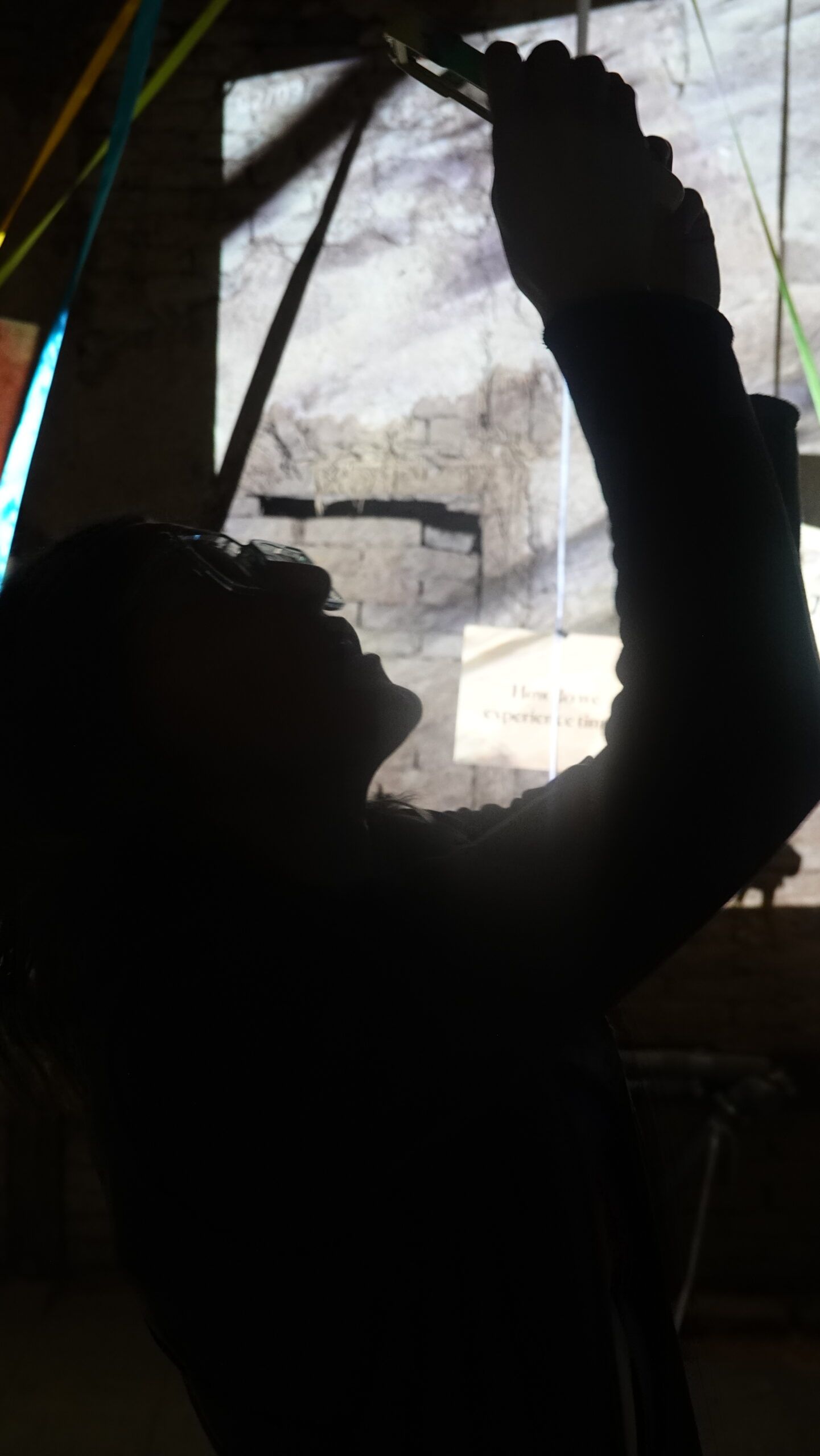
Palmer Fishman Studios
(Dominican Republic/USA)
“All the Times…
Todos los Tiempos….
die ganze Zeit….
IMMER (always, still –)”
This is a laboratory
This is a process, not a finished product
This is an accumulation
This is geological time
Climate time
Water time
Evolution, biology, ecology
Cycles
Human history, with all of the beauty and all of the bloodshed
indigenous time – “ the future is ancestral”
Colonial and imperial time
War time and peace time and
everything in between
Cultural time –
Individual and collective stories
Intersections, connections, overlapping
Layers upon layers
There can be slow, seemingly linear development, plus
Heat,
Time,
Pressure and
Cataclysms that cause sudden
Ruptures,
Tipping points,
From which it can be hard or impossible to recover
Forcing new directions
It is never finished
It asks you to interact, to contribute, to participate
This is a real time portrait-in-motion of
a disabled mind
and body
This is a window into a process that has been affected by all of earth’s history
40 years of psychiatric medication
and now the nervous system contortions, and damage that comes from my brain trying to recover as I veerrrryy slllooowwwwwlllllllyyy
reduce
The dosages of toxic lithium and other neurochemicals
that have been destroying
my kidneys
and my thyroid
and my memory
And my immune system
And most of my senses
Made me too extreme – now in withdrawal, and neurochemical overload, I
Cry too easily
Scream too easily
Break down too easily
Explode too easily
Have to run away,
take refuge,
can’t handle normal interpersonal interactions, or
stress without
reacting in ways that some consider
not socially acceptable.
Losing important relationships
Plus +
Menopause
There’s part of the human mind that wants order, that wants to find
a linear path
It makes it easier for us to understand things
It makes it easier for us to coordinate, to manage
It also makes it easier for people to control
Us
But many things in the universe do not have only one form
Matter is both a
wave
and
a particle
Try to wrap your head around that!
And time can seem linear within certain frames and durations
but it’s also spiral,
🌀
elastic,
expanding,
And one day could even go
in 🔄 Reverse …Recycle⏮️
- Draw a picture, or create a portrait in space, or write something down with the available materials.
- Feel free to add additional timelines, or hang your contribution on an existing timeline.
- Draw a portrait of how time feels for you. Hang it on one of the timelines.
- working with another person, stretch out some ribbons into different different kinds of time, how you visualize that time, and how you actually experience it.
Cultural time
– draw a picture, or create a portrait in space, or write something down with the available materials – how is visualized in your culture? In your family? When you interact with people from different cultures, do you notice differences in how they visualize, manage, or experience time? How does this affect how you get along with each other? How might understanding how they visualize or manage time help you manage things better together?
Ecological, climate, water, environmental time: what do you notice in your local environment about cycles, linear, progressions, development, ruptures, changes?
You can use the materials to create physical connections between different timelines, and different geographies. How does your life and activities here in Germany Connect to or impact other places and times?
Personal development, life, cycles, birth, puberty, reproduction, adulthood, aging, hormonal time, health time, gender time – draw, write down, or create in space images from milestones or experiences in any of these areas.
How is your personal story connected to collective stories, to environmental stories, to political and human history? You can use the ribbons to literally illustrate these connections in space.
